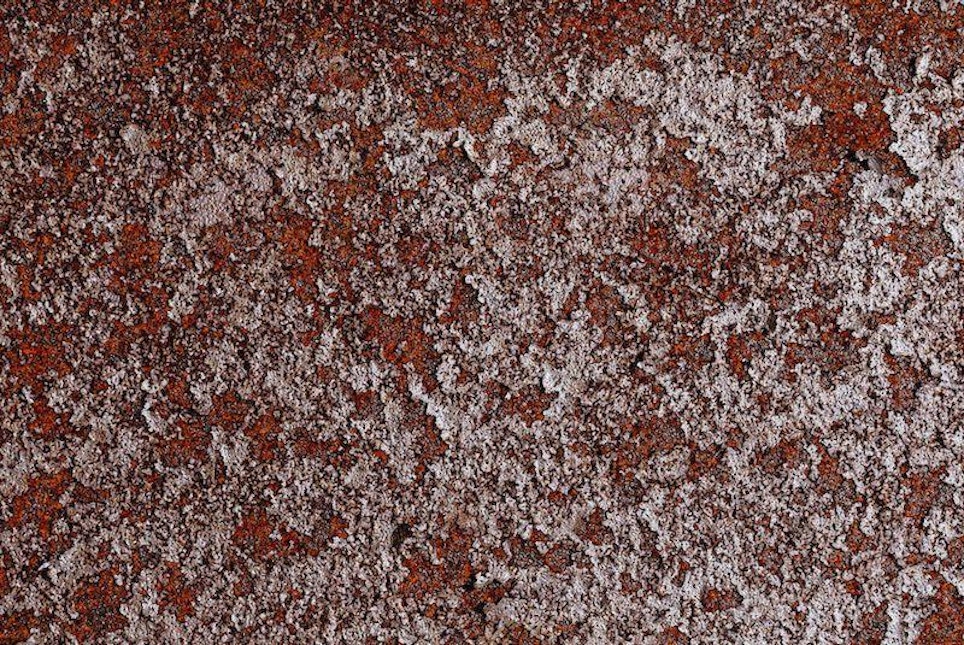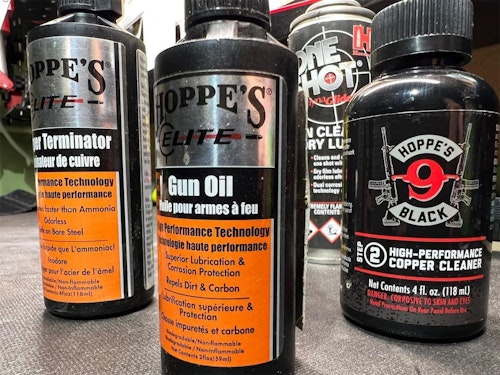There is a common enemy facing gun owners worldwide. It’s hiding under beds and inside drawers. It’s slowly advancing in display cases and gun safes and is relentless in its attacks. The culprit is rust.
If you go to any gun show, you’ll find its evidence in trays of old gun parts and on firearms with scarred barrels. What makes the issue so tragic is that rust is easily prevented. With little care, it’s possible to protect your guns from damage. Even if you notice surface rust on one of your beloved guns, it is easily removed and easy to prevent it from returning. Every customer you encounter needs to know the basics of firearm care and what products you have available in that service.
Simple Prevention
Rust is the result of the oxidation of iron or steel. When these metals come in direct contact with water and oxygen, a chemical reaction begins and rust forms. This oxidation process makes metal weaker and more brittle. It also accelerates the process of more oxidation and subsequent damage. Moreover, rust can appear over very short periods when the metal surfaces are not protected. Proper care of your guns is critical for maintaining their integrity, beauty and value.
Rust prevention is relatively easy if a few simple steps are taken.
1. Proper storage is essential.
Common sense dictates that we store our firearms in locked containers inaccessible to minors and criminals. There is also a federal law that requires it. Proper storage usually means some form of closed container or gun safe. Water and oxygen are the causes of oxidation (rust), but that doesn’t mean your weapon has to be soaking wet from rain to be affected. These two items are in the air that we breathe in the form of humidity. They surround everything. But you don’t need zero humidity. You need low humidity. Typically, a humidity range of around 50% is considered safe. Good dehumidifiers are cheap and readily available for gun safes, as are reusable desiccant packs that absorb moisture. Smaller desiccant packs, such as those for use in hard gun cases, are available for more confined spaces.
2. Protecting the metal is essential.
There must be a barrier between the firearm and the things that could cause harm. Dust, dirt and even moisture from hands can be harmful. Preventing all of these from harming your guns means that they must be thoroughly cleaned after each use. Protection will come from a coating of oil, grease or even wax, but the gun must be cleaned before that happens. The goal is to keep these harmful elements out. If the gun is not cleaned first, they are trapped against the weapon rather than away from it.
There are many great products available. Most people are familiar with typical gun oils and grease, but newer, synthetic protectants always appear and hold the promise of better, longer-lasting protection. Salespeople should keep informed about the latest products and their benefits. It’s a cost/benefit analysis. Fortunately, the costs are not prohibitive. Still, budget-conscious customers have the option of traditional gun care products with a proven track record, so there isn’t a need to go without protection.
3. In addition to cleaning and protecting guns after each use, it’s also necessary to repeat the process periodically when guns are not used. There are two reasons for this: First is to monitor their condition and ensure that rust and corrosion aren’t affecting them. The second is to ensure that the protectant remains in place. Gun owners must be aware that oil attracts and holds dust and dirt. Even if the oil is still present, these periodic cleanings prevent these contaminants from building up while the gun is in storage.
4. Keep guns away from salt water. Salt is both abrasive and chemically harmful. Cleaning becomes even more critical if exposed to salt water (or even salt from contact with human skin).
5. Don’t use older, corrosive ammunition. This falls in the same category as avoiding salts. Older ammunition may contain chemicals in the primers that turn into salts when subjected to combustion. Modern ammunition uses less-corrosive chemicals, so this is no longer a concern. Tell your customers to purchase quality ammo and this won’t be an issue.
Keeping the guns clean, lubricated and stored in the proper containers while controlling humidity are simple steps with huge payoffs. The benefits seem intangible because you only recognize them when something has gone wrong, and damage has been done. The age-old adage applies here: “An ounce of prevention is worth a pound of cure.” It’s better to stop it before it occurs than to correct it when things go wrong.
Additional steps can be taken to prevent rust from being an issue. Several protective finishes, such as Duracoat and Cerakote, can be applied to metal surfaces to avoid exposure to the elements. Firearms intended for constant exposure to the elements often come from the factory with these coatings, but there are dealers specializing in applying them to existing guns. An added benefit is that they come in various colors, thus allowing designs and patterns for a truly custom appearance.
When Prevention Fails
Sometimes, despite all efforts, rust can form on firearms. It could happen because the gun wasn’t adequately cleaned before protecting it. It could be that the oil was hastily applied and didn’t cover all metal surfaces. Whatever the reason, the fact remains that rust requires a quick response.
Treating rust is going to vary based on the severity of the problem. Slight surface rust can be cleaned with extra-fine steel or copper wool. It’s just necessary to clean the surface before beginning the treatment. A soft, dry cotton cloth should be used initially. Failing to remove the rust particles first will cause them to act as grit on a piece of sandpaper, scratching the surface as you work. Cleaning the metal first will ensure that only the steel wool will work the metal to remove rust. Once clean, 0000 steel or copper wool can be sued to lightly polish the surface and remove any remaining oxidation from the metal surfaces. It’s not necessary to apply much pressure. A little will do. But steel or copper wool should always be used with the flow of the metal. The goal is to wipe away the contaminants rather than scrubbing and marring the surfaces. It's essential that you clean the firearm again after using steel wool. Use a soft cloth and gun cleaner to ensure all contaminates are removed. Then return to the surface protection strategies mentioned above.
More severe rust will require an additional strategy. A chemical treatment may be needed to stop the oxidation process. Once pits have appeared on the metal surface, a simple mechanical cleaning with cloth and steel wool may not be enough to do the job. Nooks and crannies hold moisture and other contaminants, so cleaning these areas is critical to the treatment plan. Other helpful cleaning items may include copper or nylon pics and cotton-tipped swabs. It may even be necessary to use a light metal polish if rust is still visible. Once again, the rubbing action is with the grain of the metal and is lightly applied.
In cases of severe rust, it is recommended that the gun be taken to a qualified gunsmith to be adequately cleaned, treated and inspected. Never risk firing a weapon with severe rust issues unless the gunsmith approves.
Sales Opportunities
It is easy to fall back into the thought that this knowledge is so basic that your customers already know it. That’s not the case. The massive influx of new shooters into the market has changed the landscape. These new customers are coming to you with little or no gun experience. Anytime you encounter a new shooter looking for a gun, you must explain the different products needed to protect their new purchase. Educate them. You’ll find that the time will facilitate further educational opportunities that naturally lead to high-profit sales. Further, the time will result in great customer service and will establish you as the subject matter expert that they will return to again and again.








